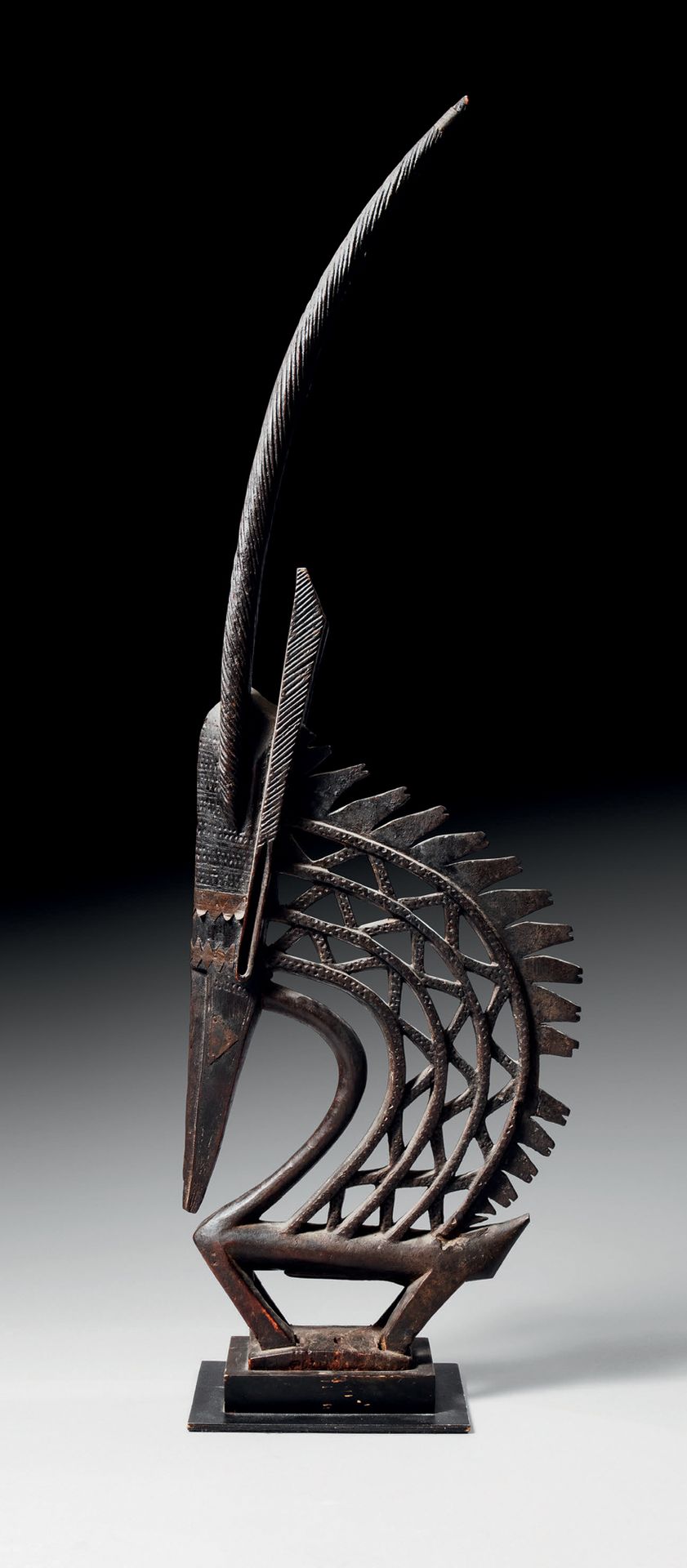Description
BAMBARA CREST, CIWARA, MALI Wood, metal H. 126 cm Provenance : Galerie Flak (Paris) Large Bambara crest representing a stylized hippotrague antelope. The head, treated in a geometric manner, is topped with a pair of tapered horns. In parallel, the ears form protrusions that flare out at the top. A decoration is incised on the surface and cut metal plates adorn the forehead. The neck of the animal, with a crenellated mane, is beautifully interlaced and decorated with days. The cylindrical body is sculpted with more sobriety. An important patina of use covers the whole. In ancient times, the antelope taught agriculture to men. It appeared at harvest time under the guise of dancers wearing a chiwara crest and covered with a costume. Accompanied by songs, music and dances, the farmers were arranged in a line and had to weed a given plot of land with a hoe as quickly as possible. Galvanized by the dancers, encouraged by melodies evoking the heroes of the past and fanned by the prettiest young girls of the village, the hoe-wielders redoubled their energy. The winner was designated chiwara, the wild beast of the culture. This tradition disappeared with the advent of the plow (Colleyn, 2002).
166
BAMBARA CREST, CIWARA, MALI Wood, metal H. 126 cm Provenance : Galerie Flak (Paris) Large Bambara crest representing a stylized hippotrague antelope. The head, treated in a geometric manner, is topped with a pair of tapered horns. In parallel, the ears form protrusions that flare out at the top. A decoration is incised on the surface and cut metal plates adorn the forehead. The neck of the animal, with a crenellated mane, is beautifully interlaced and decorated with days. The cylindrical body is sculpted with more sobriety. An important patina of use covers the whole. In ancient times, the antelope taught agriculture to men. It appeared at harvest time under the guise of dancers wearing a chiwara crest and covered with a costume. Accompanied by songs, music and dances, the farmers were arranged in a line and had to weed a given plot of land with a hoe as quickly as possible. Galvanized by the dancers, encouraged by melodies evoking the heroes of the past and fanned by the prettiest young girls of the village, the hoe-wielders redoubled their energy. The winner was designated chiwara, the wild beast of the culture. This tradition disappeared with the advent of the plow (Colleyn, 2002).
